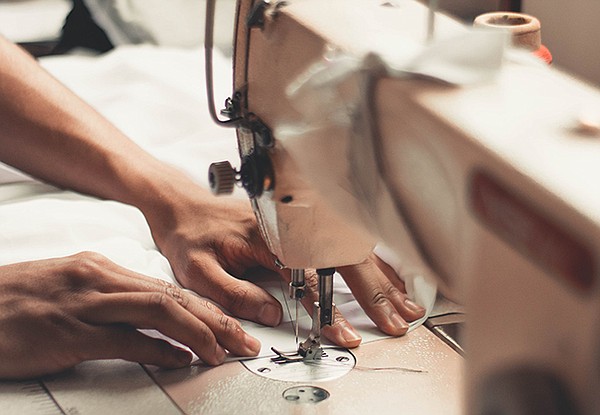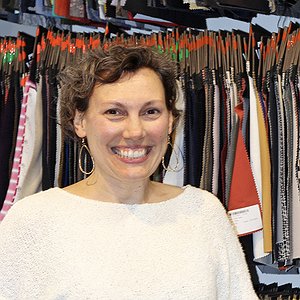INDUSTRY FOCUS: SUSTAINABILITY
The Other Side of Apparel Sustainability— Ethics in Worker Treatment
Conversations that cover the promotion of sustainability within the apparel industry often focus on solving environmental challenges that stem from pollutive practices and irresponsible materials sourcing. One of the most important sustainable issues, which is often overlooked, is the problem of ensuring ethical treatment of the workers whose labor makes apparel production possible—along the supply chain and in the factories where clothing is produced.
Many of these workers are women, some are also children, yet the hardships they face—such as unsafe working conditions, low wages, long hours and insufficient training—are frequently left out of conversations that drive action toward creating a more sustainable apparel industry. While they are the most important people in the industry, they are hidden away, out of sight and out of mind.
To create an apparel industry that is completely sustainable, worker treatment around the world, in every factory and across all suppliers, must become more ethical. California Apparel News asked apparel-industry leaders: What are the most pressing labor and worker issues that must be addressed to improve sustainability within the apparel industry?
Kerry Bannigan
Executive Director
Fashion Impact Fund
In our journey toward a sustainable future for the apparel industry, it’s imperative to place the well-being of female garment workers at the forefront. Fashion Revolution and Remake report that of the 75 million garment workers, 80 percent are women between the ages of 18 and 35 and the majority earn less than $3 per day. By proactively addressing the pressing labor and worker issues they face—from ensuring fair wages and a safe working environment to ending discrimination and gender-based violence—we can create lasting and transformative impact on their lives, communities and the sector.
We can contribute to creating a more environmentally and socially conscious industry by investing in job-training programs that implement sustainable fashion and responsible practices. The exploitation of women is frequently intertwined with other forms of exploitation such as environmental degradation and violations of labor rights. By advocating for decent working conditions and eradicating forced labor, we can positively impact both people and the planet.
Meredith Boyd
Senior Vice President of Sustainability, Technology and Innovation
Unifi Manufacturing, Inc.
There are many sustainability considerations across the global textile workforce, but one thing is undeniable: Best environmental practices and products are not achievable without our vital industry employees.
An under-discussed subject in textiles is the strong industry in the U.S.A., which comprises over 500,000 workers. When mill partners, apparel manufacturers, brands and retailers commit to long-term sourcing from the U.S., they are investing in the future workforce for apparel and textile production. Having confidence in these commitments allows companies like Unifi to invest in training and development programs as well as novel, lower-environmental-impact technology that fuels the creation of career opportunities. A thriving and growing industry is what attracts and retains workers, and this is critical for all. As a domestic company with over half of our workforce stateside, this focus is a key tenet of Unifi’s positioning and success.
The regional supply agreements for North America and Central America include a “Yarn Forward” rule of origin and are key to supporting apparel production. While the international textile supply chain is important, supply-chain challenges, which were exacerbated over the past few years, have highlighted the importance of nearsourcing for supply security. The additional focus on nearshored production and “Made in America” initiatives allows apparel manufacturers to leverage the favorable time and environmental benefits of regionally sourced production while supporting the essential U.S. workforce and regional textile infrastructure.
Sharon Donovich
Marketing Director, Global Events and Customer Success
Kornit Digital
Labor and employee concerns are recognized as a significant aspect of the United Nations Sustainable Development Goals. Ensuring a secure and healthy work environment is vital to safeguard workers, particularly in the apparel industry where working conditions are fraught with risks and accidents. Workers routinely handle hazardous chemicals, and in certain regions women and children are exploited. It is becoming an imperative to establish fair wages and safe working conditions throughout the apparel industry in the near term.
Betsy Franjola
Founder
Preface
There are several aspects of ethical worker treatment that the apparel industry must consider.
When products that are made in the U.S.A. use prison labor, what does this mean for the industry? Prison workers are often paid far less and endure more-dangerous working conditions than employees who work in trusted, ethical factories. It is an unethical practice that does not contribute to a sustainable business model. There needs to be transparency into prison labor that is used to make apparel, particularly since it undercuts responsible manufacturers who pay fair wages and benefits.
Also, since the “Made in China” label is suddenly viewed as “bad,” big brands are moving production to Bangladesh, Sri Lanka, Cambodia and other regions but at what cost? What is being sacrificed? We must examine the real labor conditions in these regions and ask the right questions. What is the quality level? What is that “real cost” that everyone talks about?
Jessica Kelly
Founder and Chief Executive Officer
Thr3efold
The biggest systemic issue creating massive labor issues in fashion is also the easiest to solve. Brands no longer have close relationships with their suppliers.
Travel frequently to your suppliers and get to know the inner workings and conditions of their facilities. Host family dinners to get to know their kids. Ask questions about pricing rather than just asking for a lower price. Brainstorm together regarding local organizations you can support to improve the community and reduce environmental impact. By intimately knowing your suppliers you can truly make them an extension of your team and alleviate some of the risk in global sourcing.
Dr. Cindy J. Lin
Co-founder and Chief Executive Officer
Hey Social Good
It is undeniable that many labor and worker issues need to be addressed if we are to build true sustainability in the fashion industry. Many issues are urgent such as ensuring fair wages and good working conditions, but equally pressing are worker job security and rapid adoption of circular-supply-chain practices, which are germane to the long-term viability of the apparel industry.
Traditionally workers in the apparel industry have precarious employment arrangements—for example, temporary contracts and subcontracting—which lead to wage insecurity and low quality of life. Businesses and brands vitally need to support stable and transparent employment contracts to ensure the healthy livelihoods of workers. In many industries it is shown again and again that a job-secure and well-trained labor force remains loyal, produces high-quality work, and helps support business growth and longevity.
We should empower businesses to adopt circular-economy practices to continuously reuse, refurbish, remanufacture and recycle materials and resources after their initial use. By keeping these valuable materials and resources in the system, we can maintain growth and creativity in the apparel industry, such as material innovation with upcycled polyester, apple-based leather, banana fiber and reimagined waste-based spandex.
As the global availability of virgin materials becomes challenged with increasing demand and resource depletion, businesses must look elsewhere to source materials. Creating innovative materials with recycling and upcycling ensures the continued availability of resources to design, manufacture and produce clothing. Maintaining our clothing manufacturing and operations means we create stable employment. If we are to ensure long-term sustainability, circularity and business benefits, it is imperative that businesses remain competitive and look to improve their long-term labor and circular practices.
Francisco Mataix
Executive Director
Ecolife by Belda Lloréns
Improving sustainability within the garment industry requires addressing several pressing labor and worker issues that not only improve the lives of workers but also reduce turnover rates, enhance product quality and minimize the environmental impact associated with unethical labor practices. These issues not only affect the well-being of the workforce but also have significant implications for the environmental and social sustainability of the industry.
Many garment workers, particularly in developing countries, earn low wages and work in substandard conditions. To improve sustainability, fair wages must be provided and working conditions should adhere to international labor standards. This ensures that workers can lead decent lives and are less likely to experience exploitation.
Health and safety hazards are prevalent in many garment factories. Addressing this issue requires robust safety regulations, regular inspections and worker-training programs. Safer workplaces not only protect workers but also reduce accidents and environmental risks.
Eliminating child labor and forced labor is essential for sustainable garment production. Companies need to implement strict policies and supply-chain audits to ensure that these unethical practices are eradicated from their operations.
The garment industry predominantly employs women, but they often face discrimination and harassment. Promoting gender equality by providing equal pay and opportunities as well as creating safe and inclusive workplaces is crucial for sustainable development.
Workers in the garment industry are frequently subjected to excessive working hours to meet production demands. Implementing reasonable working hours and overtime regulations help prevent burnout and support a better work-life balance.
Workers’ ability to organize and advocate for their rights is often restricted in some regions. Encouraging unionization and collective bargaining can empower workers to negotiate for better conditions and wages.
Brands must increase transparency within their supply chains. This includes disclosing supplier information and regularly monitoring their adherence to labor standards and environmental practices.
Ngozi Okaro
Founder and Executive Director
Custom Collaborative
The most pressing labor and worker issues are 1) a shortage of livable wages, 2) lack of skill development for workers and 3) exposure to hazardous materials in the workplace such as synthetic dyes and microfibers.
Emmanuelle Rienda
CEO
Ethical Luxury Group
The apparel industry faces significant challenges when it comes to sustainability, particularly concerning the treatment of workers within the leather sector. One of the most pressing concerns is the use of harmful chemicals in leather production, which poses risks to both workers and the environment.
Chromium salts and arsenic, for example, are commonly used in tanneries, and prolonged exposure can lead to serious health problems, including cancer. This issue is particularly concerning for workers in low-income countries where regulations and protective measures may be lacking. Moreover, the discharge of untreated wastewater from tanneries pollutes water sources, affecting aquatic life and the access to clean water for nearby communities, exacerbating environmental and health risks.
To address these issues, it is essential to implement safer chemical alternatives and promote responsible materials. Although polyurethane, a commonly used cruelty-free alternative, has a lower carbon footprint compared to leather, it is a fuel-based material and therefore not the ideal long-term solution. Instead, supporting bio-based and plant-based materials such as mushroom leather alternatives like Mirum provides a more sustainable path.
By investing in research and development for innovative materials, the industry can foster further advancements and increase the availability of sustainable options. Brands must prioritize partnerships with suppliers who uphold ethical standards, ensuring that workers are treated ethically and have access to fundamental labor rights. By taking a holistic approach and committing to ethical practices, we can create a more sustainable and ethical future, benefiting humans, animals and the environment.
Galina Sobolev
Chief Marketing Officer
StyleScan
In order to improve each company and its employee community, the idea must start at the top with management. We help companies train their employees to better serve the fashion community.
We offer complimentary training for usage of our software because the implementation is important, and we are fully committed to assisting apparel brands and fashion startups as well as individual creatives across the globe.
By being a sustainable company, we pass on the sustainability torch to every one of our clients and subscribers.
Emily Stochl
Director of Education and Community Engagement
Remake
Here in the United States the proposed federal FABRIC Act seeks to address the most pressing labor and worker issues that are needed to improve sustainability within the apparel industry. The FABRIC Act builds on key elements of California’s landmark Garment Worker Protection Act and proposes world-leading workplace protections for all of America’s nearly 100,000 garment workers.
The FABRIC Act seeks to enforce minimum-wage standards, ending wage theft in the apparel industry by abolishing the system of piece-rate pay, where workers are paid by the piece sewn instead of an hourly wage. Striving for climate justice in the industry, this proposal would create dignified jobs, benefiting working American families and communities with economic stability. It would also level the playing field for made-in-the-U.S.A. ethical and sustainable apparel businesses that currently face a competitive disadvantage against overproducing brands that often pay sub-minimum wages.
Finally, the FABRIC Act seeks to revitalize domestic apparel manufacturing with financial incentives for reshoring and domestic job creation, which would help reduce some of the apparel industry’s immense shipping and transport emissions.
Andrea Venier
Managing Director
Officina39
To really improve sustainability within the industry, labor and worker issues demand immediate attention. A multipronged approach is required, encompassing chemical safety, clear regulations, ethical standards and a transition to safer alternatives.
One of the foremost concerns is the safety of chemicals used in apparel-production processes. To enhance sustainability we must prioritize the well-being of workers by ensuring the safety of these chemicals. This involves establishing shared protocols founded on transparency and data—we need to simplify these protocols. This is essential to empower workers with a clear understanding of the risks associated with the materials they handle daily. At the same time, clear and stringent rules are needed to ban hazardous products. While regulations may exist, they must be enforced rigorously to eliminate dangerous substances from the industry entirely, not only to safeguard workers but also to foster a healthier environment.
A code of ethics, endorsed by all stakeholders in the supply chain, is another imperative to emphasize the rights and dignity of workers, ensuring fair wages, safe working conditions and protection from exploitation. Collaborative commitment to these principles is essential for lasting change in the apparel industry.
Facilitating the transition to safer alternatives is a significant step toward sustainability even if it initially impacts the industry’s budget. Research and development of eco-friendly materials and processes should be incentivized. Financial support and incentives can assist companies in adopting these alternatives without compromising their viability. Sustainability should be the guiding principle not only for the environment but also for the well-being of the workers who are the backbone of this industry. By tackling these pressing issues, we can pave the way for a more sustainable and responsible future for the apparel industry.
*Responses have been edited for clarity and space.
Sponsored by Functional Fabric Fair Portland–Powered by Performance Days


































